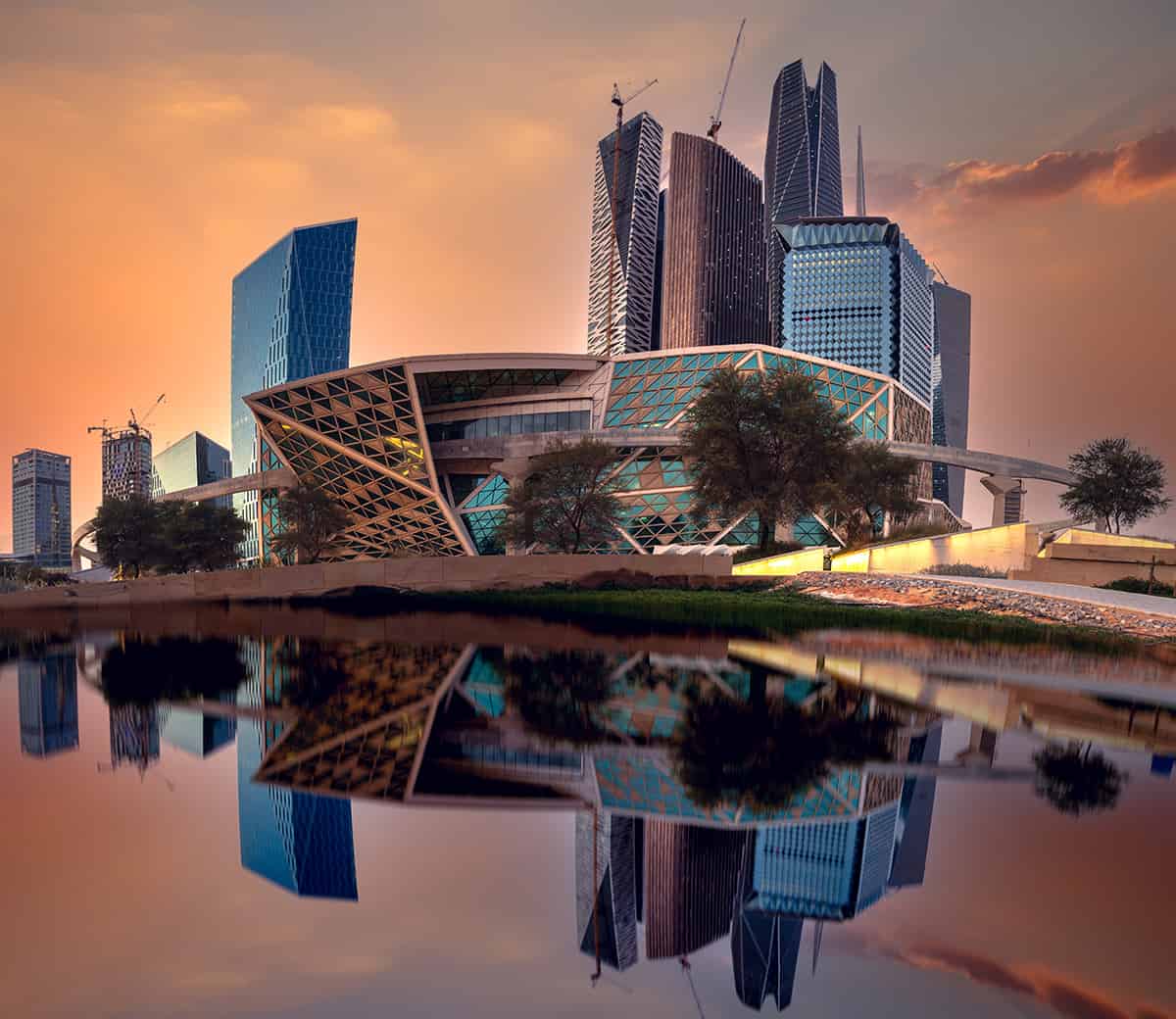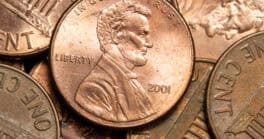Middle East turmoil is catching up with Saudi Arabia. Halfway through Crown Prince Mohammed Bin Salman’s ambitious economic and social development plan, Vision 2030, war in Gaza and the threat of regional escalation are upsetting the kingdom’s dreams of renewal.
Since November, repeated attacks by Yemen’s Houthi rebels on commercial cargoes in support of Hamas’ operations against Israel have turned the Red Sea perilous for maritime transport. In response, Maersk, the world’s biggest shipping line, began rerouting its ships around South Africa last month. CEO Vincent Clerc told the Financial Times it might be months before Maersk considers the Red Sea safe again.
Saudi Arabia had hoped to leverage its 1,100-mile coast and ports leading to the Suez Canal to establish itself as global hub connecting Europe, Asia and Africa. The war in Gaza had already cast a shadow over Riyadh’s Future Investment Initiative, also known as “Davos in the desert,” in October.
Despite these challenges, Saudi GDP growth is expected to kick back around 3% in 2024, up from a recession-level 0.9% last year owing to oil production cuts and lower oil prices. To sustain its diversification efforts, which require hundreds of billions of dollars of investments, the kingdom will need to raise public expenditure by 12% to $355 billion, according to the Finance Ministry.
That isn’t an impossible goal.
“Although we expect small fiscal deficits over 2024-2026, based on the government’s spending plans, the government has sufficient buffers to cushion against swings in oil prices,” says Zahabia Saleem Gupta, director of Sovereign and International Public Finance Ratings at S&P Global Ratings.
Already, the government’s plan to reduce reliance on oil, develop other sectors and broaden the tax base has been partially successful. The share hydrocarbon revenue in Saudi GDP has fallen from 45% in 2012 to about 40% today.
But even with deep pockets, the kingdom can’t achieve all its goals alone. To reach its targets and essentially build a non-oil economy from scratch, the monarchy is looking to attract foreign investors in sectors including retail, manufacturing, finance, health, new technologies, mining, tourism, agriculture,and entertainment (see sidebar, page 41). By 2030, it wants to increase foreign direct investment to $100 billion a year (see sidebar at bottom of page 42), matching $450 billion in domestic investment.
To persuade foreigners to engage capital, Saudi Arabia has revamped its business laws. Milestone policy changes include allowing 100% foreign-company ownership, creating a dispute settlement regime and a bankruptcy law, and rolling out digital licensing procedures, while maintaining fiscal incentives such as zero personal income tax and a 20% flat tax on corporates—the lowest in the G20 group of countries.
For investors, keeping up to date with such fast-changing and sometimes unpredictable regulatory developments is not always easy, but according to the authorities, new business deals and licenses increased by 95% and 267%, respectively, in 2022 alone.
The kingdom’s strategy blends carrots and sticks. Stakeholders who want to enter the MENA region’s biggest and fastest growing market must actively engage in the domestic economy, producing at least part of their output locally and adhering to local hiring quotas. Starting this year, foreign firms without regional headquarters in Saudi Arabia—typically those operating from Dubai—will be barred from any contracts with the government.
Investment And Funding
Despite these policies changes, Saudi Arabia has fallen short of attracting the hundreds of billions of dollars—and, significantly, the knowledge transfer—it has hoped for. With FDIs chronically under target since the launch of Vision 2030 in 2016, the authorities have had to rethink their strategy.
“By 2018, they were not as successful as they thought, so they switched the method,” notes Cinzia Bianco, research fellow at the European Council on Foreign Relations. “Saudi Arabia realized that it had to be the first to invest, or provide seed capital, in order to spur interest. It’s more an approach of partnership, where the Saudi state shoulders some of the initial risk and then foreign capital comes in as an accelerator.”
So far, the government has financed most of the country’s transformation through the Public Investment Fund (PIF), Saudi Arabia’s $700 billion sovereign wealth fund. In 2023, the PIF spent $31.5 billion on Vision 2030-related projects, a quarter of the entire $124 billion spent by sovereign wealth funds globally. Of this amount, 42% went to domestic megaprojects like Neom and the Red Sea Project, along with backup public and semipublic companies like Ma’aden (mining), Hadeed (steel), and Acwa Power (solar energy).
“The PIF is the main force behind the changes we are seeing today,” says Diego Lopez, managing director of Global SWF, a data platform specializing in sovereign wealth funds. “For 2024, we expect PIF to keep deploying capital, but also to keep fundraising from third parties to ensure a sustainable and resilient growth”
The PIF is also the main tool the kingdom is using to attract private-sector investments through joint ventures. Among the most recent announcements: a $550 million deal with Italy’s Pirelli to produce tires in Saudi Arabia, $500 million signed with South Korea’s Hyundai Motors to manufacture cars, and another contract with the US’s DigitalBridge for data centers.
Aside from the PIF, oil money trickles down through lending by Saudi banks. The sector is well capitalized and recently underwent a series of mergers and acquisitions that have boosted performance.
“We expect corporate lending to be a chief contributor to banks’ loan growth as the Vision 2030 projects are implemented.” says Mohamed Damak, senior director and head of Islamic Finance at S&P Global Ratings. “Saudi banks remain in a net external asset position and are expected to remain resilient in the unforeseen event of rising geopolitical risk.”
That said, given the scale and long-term scope of investments under Vision 2030, Damak does not expect domestic banks alone will be able to meet the government’s ambitious funding goals. “Some of the financing will come from the local and international capital markets.”
Challenges
While Saudi Arabia may appear to be a land of vast opportunity, there are some concerns about the sustainability and profitability of the crown prince’s megaprojects. Political instability in the region and power moves within the kingdom’s autocratic regime also pose concerns for investors.
“Despite these investment opportunities, investor concerns persist regarding business predictability, transparency and political risk,” the US State Department noted in its Saudi Arabia 2023 Investment Climate Statements.
Another concern is human resources. Although Saudization—a nearly 40-year-old policy requiring Saudi companies to hire Saudi nationals on a quota basis—make sense in a context where 60% of the population is under 35 years old and unemployment is a threat, investors find it cumbersome to hire local staff who expect high wages and aren’t necessarily very productive.
“A key factor to increase future growth rates will be to improve labor productivity by increasing capital investments and human capital,” Gupta says. “Increasing private-sector dynamism could also help to alleviate underemployment, further boosting productivity.”
Even with enthusiastic foreign private-sector participation, however, the ambitious and in some respects radical reform process that Mohammed Bin Salman has introduced still does not fully address the country’s problems, Bianco cautions. “There are a lot of benefits provided by the state,” he says, “but it is an expensive country and although the level of productivity has increased it is still not that high. So basically, there are more interesting options for foreign investors.”
While Saudi Arabia has made significant strides over the past few years, then, work remains to be done for it to fully unlock its potential and solidify its allure as a prime investment destination.
Startups and Fintechs on the Rise
Last year, Saudi Arabia was by far the most active market for startups in the MENA region. Total funding reached $2.3 billion spread over 145 deals: more than half the region’s $4 billion startup investment total and a 160% year-on-year increase, according to research network Wamda. The kingdom welcomed four of the region’s biggest deals: buy-now, pay-later platforms Tamara (with $340 million) and Tabby ($200 million), e-commerce site Floward ($165 million) and online groceries platform Nana ($133 million).
“Government efforts to ease regulations and build an attractive startup hub in Riyadh are paying off,” the Wamda report stated, “with an increasing number of startups from across the region relocating their headquarters to Saudi Arabia in a bid to gain access capital and the region’s largest market.”
Aside from companies leaving Dubai for Riyadh, the kingdom has also attracted several Egyptian startups looking to escape devaluation and instability at home.
Sectors with the Greatest Growth Potential
• Downstream hydrocarbons: While upstream oil production is still a Saudi-only business, downstream operations like petrochemicals are open to global players. Industry leaders including Exxon Mobil, Shell, Sumitomo, Chevron, and Sinopec are already actively involved. Additionally, the kingdom is interested in technologies that can make hydrocarbon extraction cleaner, especially those designed to reduce methane emissions.
• Mining: In January, the authorities revised their estimates of Saudi Arabia’s unexplored mineral wealth from $1.3 trillion to $2.5 trillion. Resources up for grabs include gold, phosphate, silver, nickel, bauxite, copper, and zinc. Some, like manganese, are already in high demand to power the transition away from fossil fuels. Since 2020, new legislation facilitates the licensing process for foreign investors. The Economist reports 2,300 active licenses, including 700 for exploration. Alcoa and Mosaic have already signed $19 billion worth of joint ventures with Saudi public companies, and in February, Boeing inked a similar memorandum of understanding for titanium. Many more deals are in the pipeline.
• Clean energy: Saudi Arabia aspires to be a leader in clean energy. It plans to derive 50% of its own electricity from the wind and the sun by 2030 and to achieve net-zero emissions by 2060. In addition to renewables, the kingdom is investing in nuclear power and hydrogen. Saudi is currently building the world’s largest green hydrogen plant, slated to produce 600 tons per day by 2026.
• Transport and logistics: Saudi Arabia’s cities are exploding. The capital, Riyadh, is expected to double in size within the next seven years while brand new urban hubs like NEOM are being built in the desert. The kingdom also wants to establish itself as a global trading and logistics hub. In March, it launched a second national airline to serve 100 destinations by 2030 and it is finishing a new airport in Riyadh to accommodate 120 million passengers.
• Financial services: Saudi Arabia recently opened its financial sector to foreign investors, drawing in tens of applications from international banks looking to enter the market. “The country is well-positioned for the future and should remain an engine of Middle East growth,” says Mazen Bunyan, CEO of Standard Chartered Bank Saudi Arabia. The UK bank launched operations there in 2021 and is poised for significant expansion. “The kingdom is a large, attractive market, one that we have always been interested in,” Bunyan adds, “and we expect to double our own growth in the country over the next few years.”
FDI Numbers in Question
Last July, the UN World Investment Report noted that Saudi FDI inflows had reached $7.9 billion in 2022. Media headlines quickly pointed to a 60% year-over-year (YoY) drop from 2021’s $19.2 billion. But in fact, and notwithstanding that 2021 was an exceptional year due to Saudi Aramco’s $12.4 billion pipeline sale to US EIG Global Energy Partners, the numbers indicated robust YoY growth since 2017.
Nevertheless, in November, Saudi Arabia adopted a new methodology to calculate FDIs that conveniently quadrupled its numbers. Official 2022 FDI inflows are now $33 billion, up 22% from 2021.
“Investors are entering the fast-growing Saudi market with confidence due to its size and strategic position,” Khalid al-Falih, then minister of Investment, proudly commented at the time, “which provides an excellent platform to access growth opportunities across the Middle East and beyond.”
The new methodology was approved by the International Monetary Fund and the UN. But however they are calculated, FDI remains well below the pace required to meet authorities’ $100 billion annual target for 2030.
| Saudi Arabia’s FDI inflows (USD millions) | |||||
| 2017 | 2018 | 2019 | 2020 | 2021 | 2022 |
| 1.419 | 4.247 | 4.563 | 5.399 | 19.286 | 7.886 |
| Source: UNCTAD World Investment Report 2023 | |||||




